Are you packing Japanese-style bento for your children or for work? Here are helpful food safety tips on keeping the lunch safe until lunchtime.
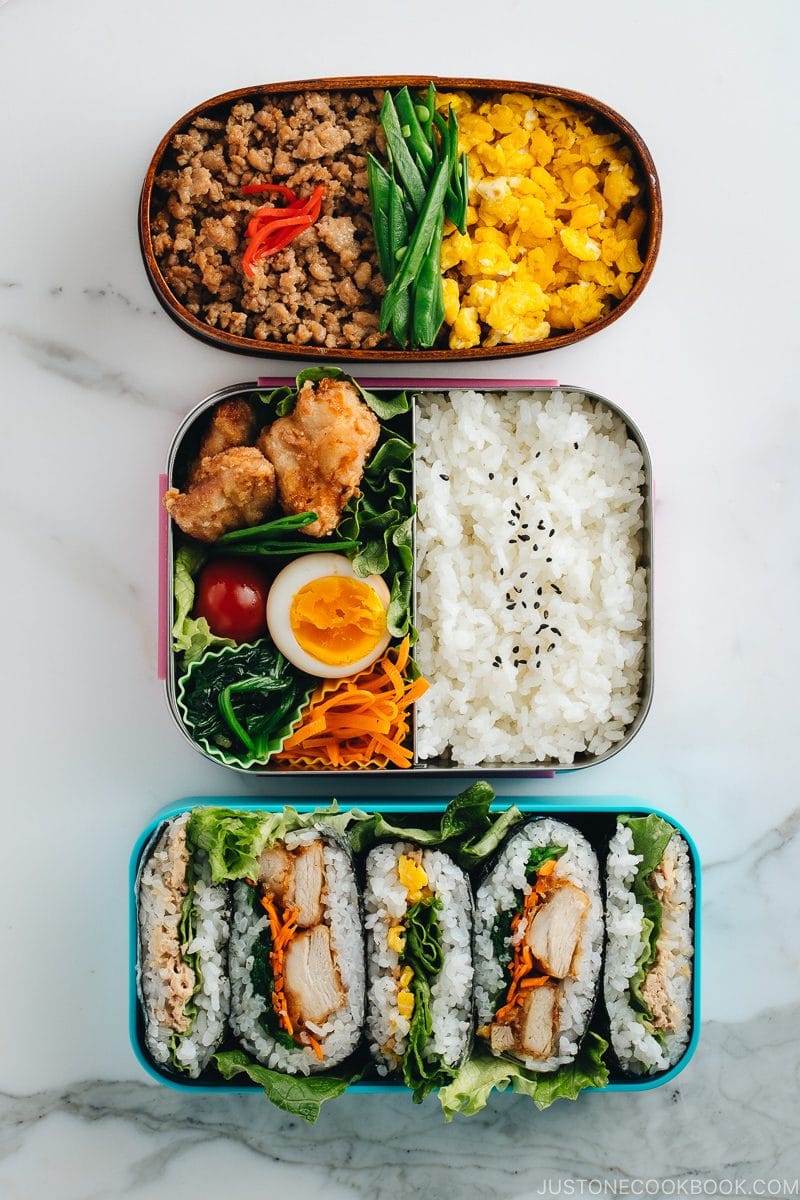
Bacteria can grow rapidly in a warm environment, which can cause food poisoning.
Don’t worry, I don’t mean to scare you. I brought homemade bento that my mom prepared every day to middle school, high school, and college, and I never had food poisoning.
To make sure the food is safe for those you pack lunches for, you should follow the following 3 key points: cook/reheat, let cool, and keep it cool till lunchtime.
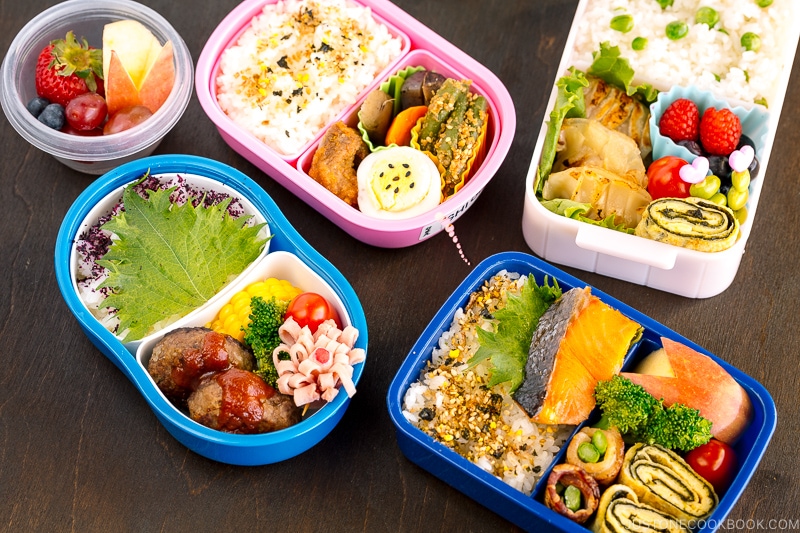
Why We Reheat Food
Japanese bentos are meant to be eaten at room temperature. The fact is the longer food has been lying around, it gets less fresh, even if you put an ice pack or keep it in the refrigerator.
Therefore, I highly recommend reheating cooked food before packing lunch. Reheating cooked food kills bacteria. It’s better to take extra safety precautions especially if you live in a humid or hot climate.
All you need to do is to reheat the food, let it cool down completely before closing the bento box, and then keep the bento cool with an ice pack the whole time with till lunchtime.
However, if you can keep your bento box in the refrigerator and microwave it at lunchtime (such as in the office), it is okay to pack lunch the previous night and keep it in the refrigerator.
Read more about food poisoning and food spoilage here.
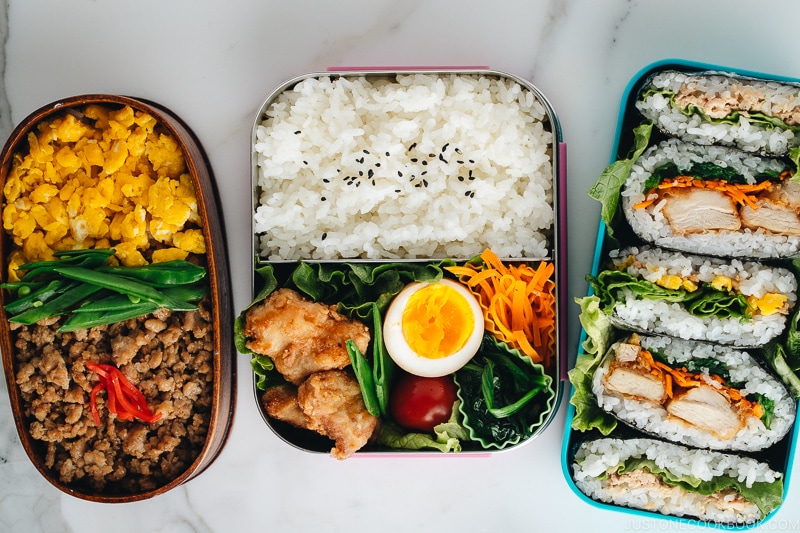
How To Keep Your Bento Safe
Before Packing
- Wash your hands.
- Make sure your bento box is clean and dry.
While Packing
- Use clean utensils (chopsticks etc) or plastic gloves when you touch food. Your hands carry germs so it’s better to avoid handling food with bare hands. If you touch one food to the other with the same utensil, wipe off the utensil in between, or simply use another utensil. If you decide to wash it, then make sure your utensil is completely dry before picking up another food.
- Re-heat pre-cooked/leftover food before packing is highly recommended. If you do so, I also recommend heating up with a pan or toaster oven instead of microwave so that food, especially meat, is heated THOROUGHLY and not partially.
- Before you pack cold/cool food in your typical Japanese bento box, hot/warm rice must be cooled down. It’s dangerous when hot/warm rice heat up other food halfway because bacteria would start growing.
- Remove all liquid from the food which could spoil faster.
After Packing
- To avoid any risk of bacteria growth, you must cool down the food first before closing the bento, especially if the lunch box is going stay at room temperature for a few hours period.
- Use ice packs and an insulated bag to keep food fresh and safe till lunch time.
Sign up for the free Just One Cookbook newsletter delivered to your inbox! And stay in touch with me on Facebook, Pinterest, YouTube, and Instagram for all the latest updates.

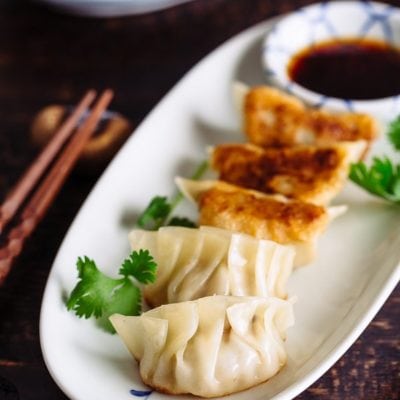
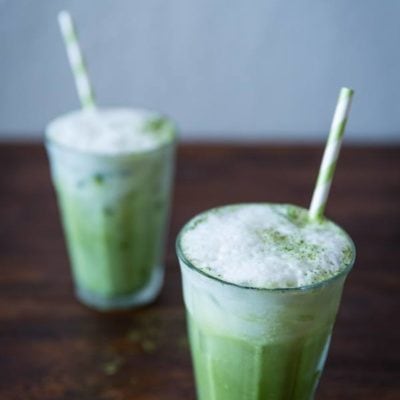


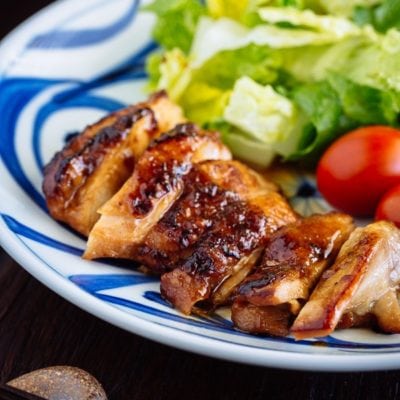
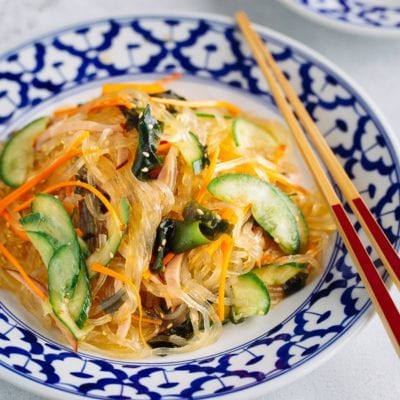
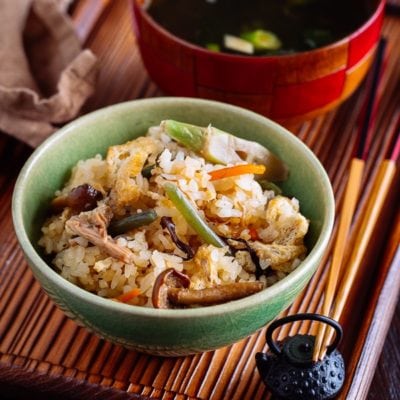
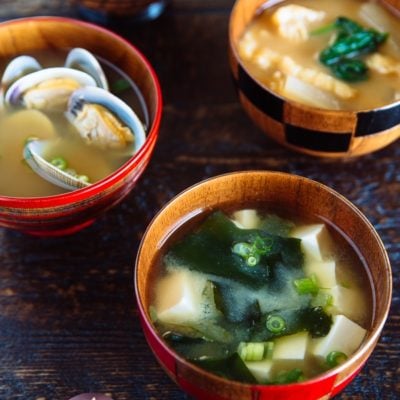
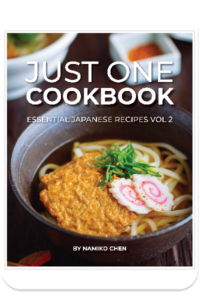
Hi Nami, sorry for asking so many questions but I’m still a bit confused. I was wondering if I do reheat my food in the morning, then keep it in an ice pack and bring it to work (without keeping it in a refrigerator or microwaving it at lunchtime) then by lunchtime do I eat the food cold? And if I leave it to warm, won’t the bacteria grow? Also if I get the lunchbox ready at around 9.30-10 do you think it’s possible for it to be safe to eat at say 6-7pm?
Thank you!
Hi Cheryl! First of all, please remember. Bento is meant to eat at room temperature or cool (due to ice pack) in Japan. So yes, we eat food cold. We choose ingredients and food that taste good without heating up. But at the same time, Japanese are used to eating bento and although we love warm/hot food, we expect bento dishes to be eaten that way…
If I understand correctly… you pack lunch in the morning (reheat + pack). Bring it to work in lunch bag with ice pack. Eat it without heating up.
What you need to do is to make sure after reheating the leftover food in the morning, make sure to cool it BEFORE packing in the lunch box. This “cooling” is to make sure there will be no condensation inside the lunch box when you close the lid. That is bacteria friendly environment.
IF you live in non-humid place, you don’t have to worry as much, but I can’t be responsible for food safety so I recommend everyone to “re-heat” just like how Japanese people make lunches. Some meals can be packed previous night and keep it in the fridge till morning. Then pack with ice pack in the lunch bag to bring it to work. But in general, I recommend everyone about reheating because that’s for sure kill bacteria that might have been growing. I don’t know what everyone is packing, so this is a general guideline (and standard procedure in Japan).
And packing lunch at 9 am and eating at 6pm sounds a little too long if it’s not properly stored in a cool place. I can’t tell how long ice pack has been cold so I won’t be able to say that’s safe to eat.
Hope this makes sense! 🙂
Hi! Question about your above post regarding bento food safety. So if i pack my bento the night before to eat the next day for lunch do I have to re heat the bento? How do you re heat if your bento box is stainless steel or plastic? Thanks for any tips!
Hi Ocsliew! For food safety (because I don’t know how everyone keeps their bento till lunch time), I always suggest how Japanese make lunch traditionally. We do not pack bento items inside the bento box till the morning. We always re-heat leftover food in a pan/toaster oven/microwave first. Then let it cool down, and then pack. This will prevent bacteria growth. In Japan, most cases, we do not store bento in the refrigerator after you leave the house, so it’s important that food stay safe till lunch time. If you can bring to work or school and keep it in the fridge, you can pack at night and then keep it cool all the way till lunch time. Then you can pack previous night. Hope this makes sense. 🙂
Hello,
I’m a new bento user and I have a few questions, let’s say I cook everything in the morning before i leave for my classes in my university, and i pack it at around 8 am to eat it at around 1:30 maybe 2:00. I should use ice packs right? especially in this weather right now, and do i put the ice packs inside the bento box itself or on the bag I’m carrying the box in? Also I like to eat a lot of meat, any ideas on what would be great for a bento box and how do I pack any kind of meat inside the box? and how do you keep the rice fresh inside the bento? Finally do you recommend any ice packs?
I’m sorry for the questions, I just need to get everything right before packing my lunch.
Hi Noah! Unless it’s in winter or cold weather, I highly recommend to pack your bento in insulated bag that also contains ice packs.
The ice packs goes outside of bento box, but when you put your bento box in your insulated lunch bag, you should put ice pack very close to the bento box.
For meat, I recommend some meat that’s less fat, especially you pack with ice pack… all the fat will solidify. I avoid pork belly and high fat meat. Chicken and sliced beef/pork will work. And to taste good at room temperature, I recommend to season it a bit more than usual.
For rice, Japanese rice usually stays moist and won’t dry as long as you seal the bento correctly.
I don’t have any particular ice packs that I recommend, but I use the ones that came with the lunch box (and the ice packs go to the net pocket area).
Hope this helps! Feel free to ask me anytime. 🙂
I’m a 16 year old high school student. I am not Japanese, though I really love everything about the country and culture. I want to prepare a bento box, but I’m at a loss as to how to do it safely without having to worry about getting sick. I know you covered a lot in this article, but I’m still confused. Can you make it any simpler for me?
Hi Billy! If your school doesn’t have an microwave to heat up your lunch, you need to make sure your lunch is kept cold till your lunch break. You should pack food that you can still enjoy at room temperature. If you are going to pack previous night’s leftover, you can pack at night and keep in the fridge overnight, then pack in insulated lunch bag (with ice pack) to bring to school. In Japan, we try to make sure food safety by re-heating the leftover in the morning (to kill any germs). Whenever you put warm food in the lunch box and close the lid, it creates condensation. That water will cause the food to go bad. Therefore, you need to cool down the food before you close the lid. That’s pretty much basic rule. If you still need help on this topic, tell me your senario in details so I can help you better (you can email me too). 🙂
HI Nami. Is it okay if I pack my food overnight and don’t re-heat it the next day when I have it for lunch? Are the foods that I shouldn’t eat cold?
Hi Sonya! In Japan, we always recommend to re-heat the food before packing in the morning. However, if you can maintain your bento cold throughout the time (no temperature difference), it should be okay. We eat bento at room temperature (that’s a part of bento culture). If your school or work doesn’t have a microwave, then you should pack some food that’s good at cold or room temperature. I grew up with cold/room temp bento so it doesn’t bother me, but if you’re used to, you might want to choose the right menu. 🙂
Hi! Thank you for sharing your advice. I’m going to be a new bento-user (waiting to receive my bento box). I was wondering, what if you don’t have the option to heat your food at work? We don’t have a microwave at work. But we do have a fridge, where I can keep the box cool. In this situation, should I only eat ‘cold’ food, like fruits, veggies and (cold) rice?
Hi Dubu! Traditionally, we eat bento at room temperature. Kids at school and people at work… we are all accustomed to eat room temperature bento. We only put food that tastes good at room temperature too. So that’s one reason why we even put bento ingredients in non-thermo bento box. These days people might microwave as bento box became “microwavable”. We usually keep the bento at room temperature (unless it’s hot weather), or cool with ice pack or in the refrigerator (if available), and eat at room temperature. If you prefer warm food, you might want to consider thermos jar that can keep the food relatively warm till lunch time (not hot). Hope this helps… If you want to use your new bento box, choose ingredients that you enjoy at room temp or cool. 🙂
hihi Nami. I’ll be starting my intern and my allowance from it wouldn’t be enough to cover my lunch so i was thinking of packing food to work… but problem is i’m not a morning person and i was just wondering if it’s possible to pack my bento before bed and then take it out of the fridge after that without reheating in the morning since it’ll probably be at room temperature at lunch? do i have to ensure that the lid is closed only after it’s cooled down? can’t i just close it immediately and dump it into the fridge? sorry, i’m quite new to cooking and these are all like rocket science to me hahaha. thanks for the wonderful recipes. 🙂
Hi Sharmine! Do you live in hot and humid area? If not, I won’t worry too much. However, if you do, try to keep your lunch cold from previous night you make bento until you are ready to eat. It goes bad when the food is at room temperature. Also, please put the lid on after cooling down. The condensation from the lid (if you put the lid on when food is still hot) should be avoided. It is great if you can re-heat the lunch (with microwave?) if you can. Hope this helps! Good luck with your internship! 🙂
Hi Nami! I’m fifteen years old and for my next birthday, I wanted have a Japanese themed birthday party including bento boxes.
I have two questions:
1. Do you know where I can get bento boxes in bulk?
2. What are the best foods that everyone likes in their bento boxes?
Thank you, Jada J
Hi Jada! Happy Early Birthday! 🙂 Here are my answers:
1) I’m not sure if you can buy in bulk, but ask an online shop like http://en.bentoandco.com/?
2) What’s your popular Japanese (bento) food in your country, and which dishes are familiar to them? Maybe onigiri (rice ball) and karaage, etc? Popular foods in Japan can be different in another country.. 🙂
Hi,im only 12 and i am thinking of preparing bento for myself and i am not really sure about the basics,what items i need etc. so i am hoping that you can tell me about those and where can i buy my supplies in singapore
Hi Penny! So sorry – I somehow didn’t see your comment till now. I apologize for my late reponse.
Here’s the main page for Bento How To…
https://www.justonecookbook.com/bento-how-to/
And I hope this tutorial is helpful for you.
https://www.justonecookbook.com/recipes/how-to-make-bento/
And in terms of shops… http://en.bentoandco.com/ is a very popular site. 🙂
Do you know a good thermal lunchbox I can get? I have been looking around for one, but I can’t find one that people say actually keeps the food warm.
Hi April! My kids use Thermos Food Jar. I pour boiling water into the jar twice (hot water become warm immediately after pouring for the first time, so I do it again to make sure inside is hot) before adding lunch inside. My kids say the food is “warm” (not hot) when they eat. They said it’s okay. Hope this helps!
Here’s the link: http://www.thermos.com/product_catalog.aspx?CatCode=FOOD (You can buy on Amazon).
any tips for how i can pack my bento in my backpack without squishing it owo and also is it ok to keep a boiled egg out for more than 5 or 4 hrs ?
Hi SN06! I usually pack in bento box, then put it in an insulated lunch bag with ice packs in it. For boiled egg, 4-5 hours should be okay as long as bento box is in an insulated bag with ice packs (but when I was small, we didn’t have an insulated lunch bag and a boiled egg was in the bento too….). 😀
I am very much impressed by the wide variety of recipes and wealth of useful cooking related information that is contained on your website.
Hi Edwin! Thank you so much for your kind words! 🙂
hello ^^ i really like your blog but i have a problem
I’m 15 and i’m thinking of preparing a bento box for myself because my mom usually doesn’t because since we’re from Pakistan and only i’m interested in japanese stuff my family doesn’t even know what a bento is,but the problem is that whenever my mom used to make a lunch box for me when i was young the food would always be stuffed at the side of the box(partly because i placed it vertically in my bag) but i really need a solution for this….thank you
p.s. i’d also love some easy to cook suggestions for the bento
Hi Abdul! Thank you so much for your kind comment! The only way to keep the food in place is to pack tightly. Lunch box with compartments or silicon cups help a bit but the key is to pack food tight that it won’t shift. I always put leftover main dish in bento. And fill in the gap with veggies etc. Hope this helps!
^^ thank you very much i’ll try that
oh i forgot to ask sorry ^^……..in the bento box is there a good replacement for meat,chicken cutlets etc?
Hi Abdul! You really can put anything you like. There’s no rule for what needs to be in the bento box. Well, no raw food, but that’s about it. 🙂
What if you wanted to eat 5 meals away from home. Would you reheat all of them, cool them down, and put an overpack with them? I like the idea of eating room temp food safely but I guess I’m confused as to why it’s needed to reheat the food if it’s been frozen the whole time. Wouldn’t that just keep it in the “danger zone” longer?
Hi Grant! If it’s been frozen, and you can keep it frozen until you heat it at your lunch place, then that’s no problem.
This “reheating” is for
– packing leftover food
– keeping lunch box at room temperature/cool place till lunch time (not in fridge)
– have no access to reheat before meal
– people live in the area with high temperature and humidity.
Basically reheating kills bacterias and by re-heating in the morning, you may stop the food from going bad.
If you live in a cold place, you don’t have to worry as much as someone who lives in hot and humid place. It is important for me to talk about it for everyone, as I include “leftover” food from previous night into lunch box.
Great tips. I work at a flower shop so I’m able to keep my food in the cooler til lunch time. Lucky me 🙂
Thank you Faith! 🙂
Hello! I’m in Indonesia and I love your website!
I always prepare lunch boxes for my kids too. But the main problem is the same: I cook in the morning, and put all the warm/hot food ( fresh cooked rice, fried nugget, boiled sausage, etc — everything hot directly to the lunch boxes); then the kids zoom out to school.
To avoid unwanted effect of plastic boxes, I use good quality stainless lunch boxes. Is it safe to put hot food at 7 a.m., then the kids will eat them at 9.30 or 10 a.m.?
Older kids even have to stay longer for school and they got “resting time” (can eat and rest) at 10 a.m. and 1 p.m… is it possible to make bento in the morning and be eaten at 1 p.m.?
Hi Mariani! Thank you so much for following my blog! 🙂
First of all, since you live in Indonesia, pretty warm/hot/humid place, I will take the safety extra cautious. In Japan, we have to be VERY careful to make bento because it goes bad fast due to the hot and humid weather.
Unless you use thermal lunchbox, I don’t recommend you to pack HOT food and close the bento box to eat later. Condensation from hot food will create warm humid place inside the bento box and bactaria thrive in such environment. If your children love hot food, can you buy thermal bento box so that it stays hot and don’t mix with other cold/room temperature foods?
You make bento at 7am and it’s okay to eat around 1pm too (probably not later than that). If you don’t use thermal lunch box, you need to cool down the foods first before you close the lunch box. You can put ice packs under and on top of bento to cool down faster. Then pack ice packs inside the lunch bag too, to keep it cool. Especially when it’s hot and humid day, it’s very important. 🙂
Hope that helps.